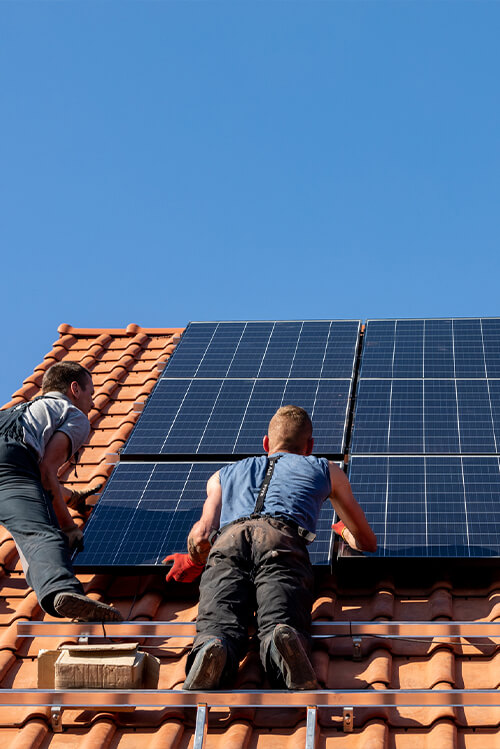Solar panels are a green and cost-effective solution for sustainable energy. Once you’ve decided to power your home with energy collected by solar panels, the next step is getting your solar panels installed. Depending on the size of your house, the complexity of the system, and how many panels you are getting, residential solar panel installation usually takes up to three or four days. Here’s what you can expect before and during the solar panel installation process.
Before Solar Panel Installation
Before your new solar panels are installed, you’ll finalize the plan for your home system with Current Home. Your agent will help you determine how many panels you need to power your home, and how much electricity is needed throughout the day. You’ll also discuss your solar panel installation cost and financing options and tax incentives, along with how much money you’ll save each month on your electric bill. Be sure to ask about state-specific tax incentives, such as in Florida and California.
The Solar Panel Installation Process
When your solar panels are installed on your home, you can expect this process to be followed:
- Setting up the work site: The installation team will start the solar panel installation by preparing the area for work. They will choose the best place to install the panels—with no shade or objects obstructing the sun—and may set up scaffolding so they can easily climb up and down throughout the project.
- Install the mounting system: This structure will support the base of the solar panels. It will be installed at an angle, tilted between 18 and 36 degrees, to allow for exposure to the maximum amount of sunlight.
- Install the panels: With the solar mounting system in place, the panels themselves will be positioned and installed on top using screws, nuts, and bolts. This process may take a day or two.
- Wiring: The installation technicians will turn off your house’s electricity supply while they complete this step. They will install the electric wiring that will connect the solar panels, gather the energy, and convert it into electricity that can be used to power your home. The solar inverter is also installed at this time, as is the battery, if one is included in your system.
- Connect the meter: A meter will be installed to track how much electricity is produced by the panels and used by your home. The system will be connected to the city electric grid as well, which will kick in at night or other times the solar panels are not generating electricity.
- Testing: Once the entire solar panel installation is complete, technicians will test the system to make sure it functions correctly. They’ll turn on your system and get it going for the very first time.
Congratulations—your solar panels are up and ready to go!
Solar panels are a good option for any home, especially in case of California power outages. Solar energy is clean and efficient, and saves you money on your electricity bill. Are you ready to install solar panels on your southern California home? Look into our solar program today!







